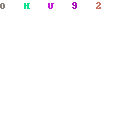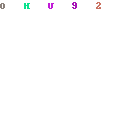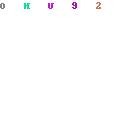
If so, please read the post below, should you have any questions, you are welcome to get instant help from Tee Support experts 24/7 available.
Get to Know Get- amazing-results
Please be noted that click.get-amazing-results.com in itself is not a hijacker until it keeps redirecting you to suspected web sites with pop ups and changes your default homepage. You will simply sense it is a hijacker when you tried to remove it in the control panel but failed. Some victims might meet up with it after they downloaded some dvd ripping software, or visited infected websites which contain certain Trojan horse or rootkit, otherwise it won’t be an annoying object hijack helper.As we know that hijacker works like a tracking tool, recording the visit activities in an effort to steal your personal information and send it to a remote hacker for illegal profit. To safeguard your confidential information, please follow the steps below, and please remember to change all the passwords you typed on the infected User after the removal. If you cannot proceed the steps, please simply start a live chat to get professional help from Tee Support experts 24/7 available.
Detailed Instruction for Radical Get- amazing-results Removal
1. Go to the Start Menu. Select Control Panel → Add/Remove Programs.
2. Search for Get- amazing-results in the list. Select the program and click Remove button.
3. Remove Get- amazing-results browser add-ons Internet Explorer:
a) Open Internet Explorer. Go to Tools → Manage Add-ons.
b) Remove all Get- amazing-results components
4. Go to the Registry Editor to delete all related entries listed below
a) Click “Start” menu, hit “Run”, then type “regedit” click “OK”.


b) Delete associated Get- amazing-results files and registry values:
Files:
C:\WINDOWS\assembly\MAC_64\Desktop.ini C:\Windows\assembly\MAC_32\Desktop.ini C:\WINDOWS\system32\ping.exe
Registry values:
HKEY_LOCAL_MACHINE\SOFTWARE\Microsoft\Active Setup\Installed Components\random
HKEY_LOCAL_MACHINE\SOFTWARE\Microsoft\Windows\CurrentVersion\run\random
HKEY_CURRENT_USER\Software\Microsoft\Windows\CurrentVersion\Uninstall\“UninstallString” = “‘%AppData%\[RANDOM]\[RANDOM].exe” -u
Tips for Future Virus Prevention
- Use a firewall to block all incoming connections from the Internet to services that should not be publicly available. By default, you should deny all incoming connections and only allow services you explicitly want to offer to the outside world.
- Enforce a password policy. Complex passwords make it difficult to crack password files on compromised computers. This helps to prevent or limit damage when a computer is compromised.
- Ensure that programs and users of the computer use the lowest level of privileges necessary to complete a task. When prompted for a root or UAC password, ensure that the program asking for administration-level access is a legitimate application.
- Disable AutoPlay to prevent the automatic launching of executable files on network and removable drives, and disconnect the drives when not required. If write access is not required, enable read-only mode if the option is available.
- Turn off file sharing if not needed. If file sharing is required, use ACLs and password protection to limit access. Disable anonymous access to shared folders. Grant access only to user accounts with strong passwords to folders that must be shared.
- Turn off and remove unnecessary services. By default, many operating systems install auxiliary services that are not critical. These services are avenues of attack. If they are removed, threats have less avenues of attack.
- If a threat exploits one or more network services, disable, or block access to, those services until a patch is applied.
- Always keep your patch levels up-to-date, especially on computers that host public services and are accessible through the firewall, such as HTTP, FTP, mail, and DNS services.
- Configure your email server to block or remove email that contains file attachments that are commonly used to spread threats, such as .vbs, .bat, .exe, .pif and .scr files.
- Isolate compromised computers quickly to prevent threats from spreading further. Perform a forensic analysis and restore the computers using trusted media.
Video Gide on How to Remove Get- amazing-results
Note: nowadays, Antivirus Programs are fallacious as they are not capable of keeping abreast of viruses’ evolution or mutation.If you can't proceed the steps, please feel free to contact Tee Support experts 24/7 available for real-time tech support.

No comments:
Post a Comment